Book with Confidence: Enjoy peace of mind — your 10% deposit is fully refundable up to 60 days before departure. See terms & conditions.
Guided Okinawa Island Bike tour
Join us on an unforgettable Okinawa Bike Tour and discover the secrets of Japan’s southernmost island, renowned for its remarkable longevity and vibrant health. Often called the Land of Immortals, Okinawa is famous for its high concentration of centenarians, stunning white sand beaches, and lush mangrove forests. As you cycle through this tropical paradise, you'll explore Japan's largest mangrove forests and most beautiful coral reefs, including the UNESCO World Heritage Site of Yanbaru. Delve into the birthplace of Karate, savor Okinawan vegetarian cuisine, and experience the world’s original Blue Zone. This tour invites you to uncover what makes Okinawa a beacon of longevity and well-being while enjoying its picturesque landscapes and rich cultural heritage.
Guided
casual hotels
Naha
Naha
moderate
70 km / 43 mi
6
Min. 4, Max. 10
Naha International Airport (OKA)
Naha International Airport (OKA)
Highlights
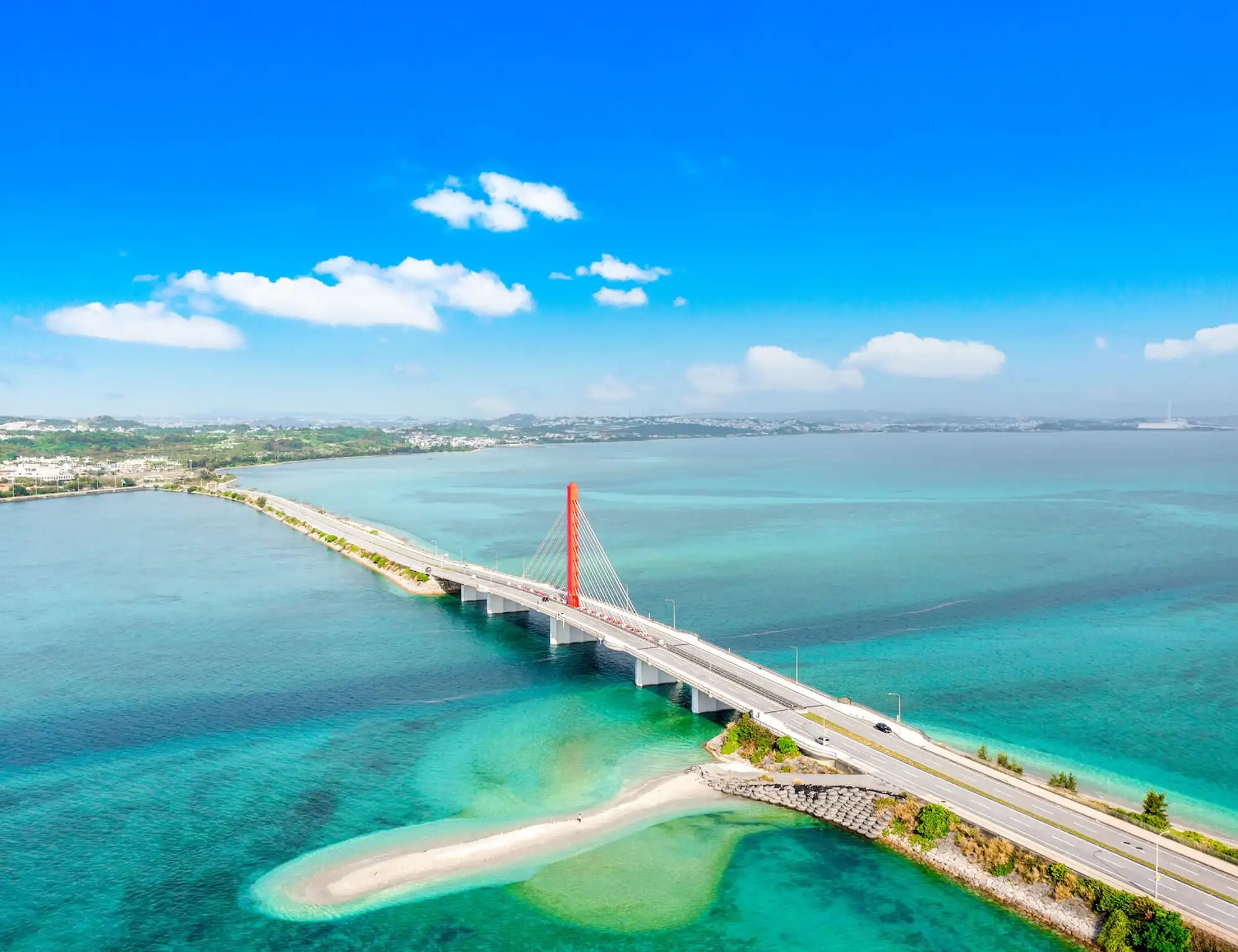
Stunning Coastal Routes
Experience the thrill of cycling along Okinawa's picturesque coastline.
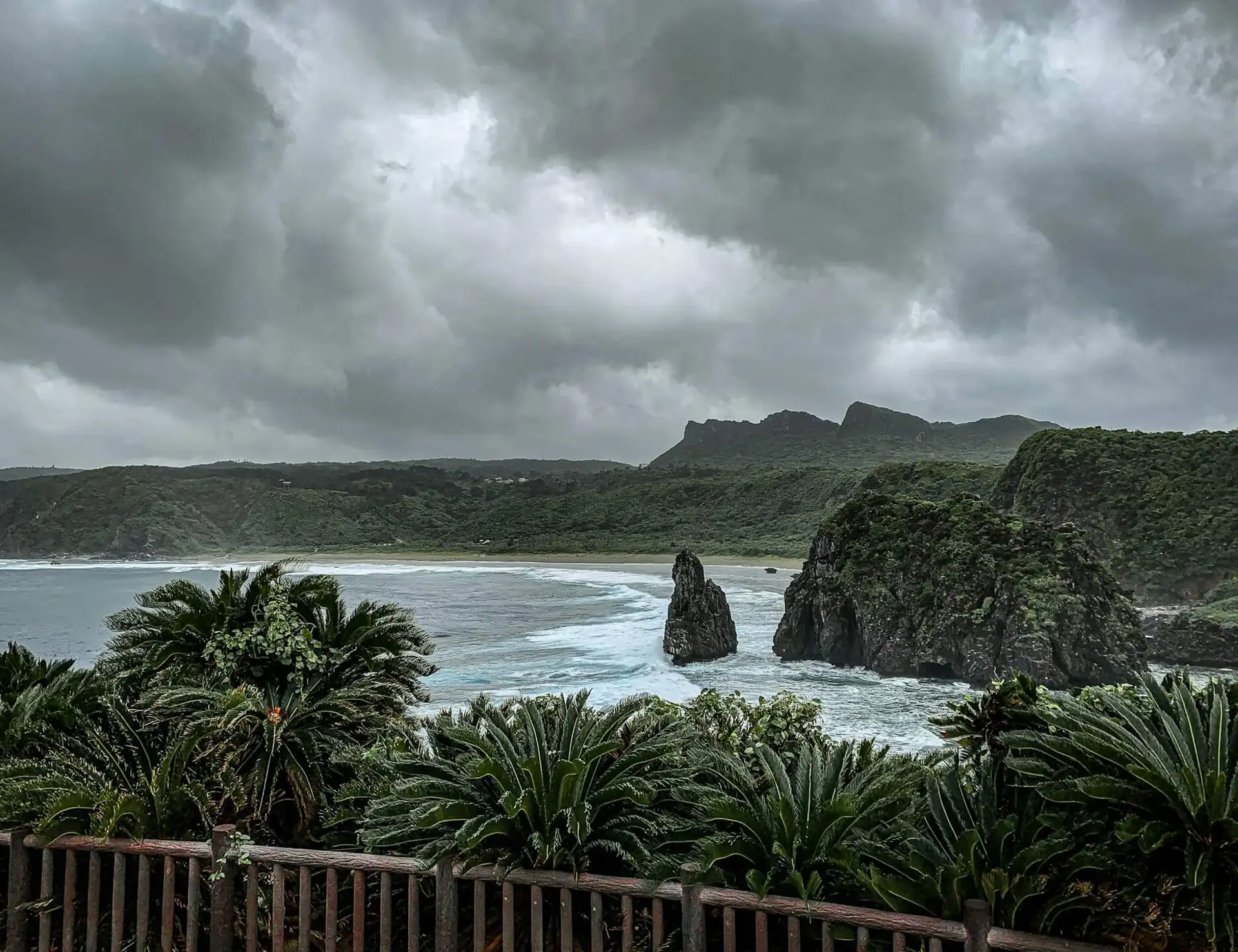
Yanbaru Forest
Immerse yourself in the breathtaking natural beauty of this unique tropical island, anchored by the World Heritage Yanbaru mangrove forest.
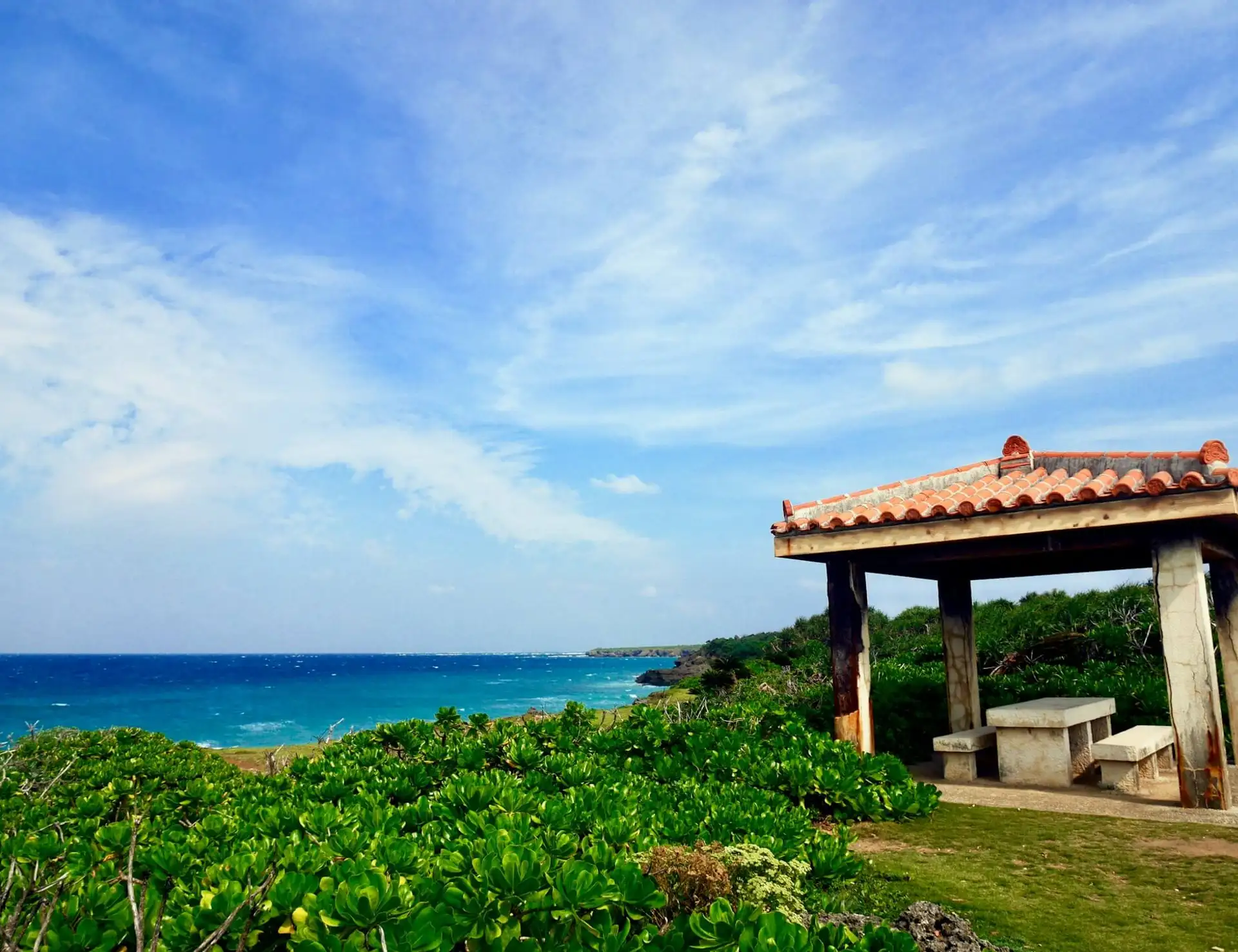
Cultural Heritage Sites
Discover Okinawa's rich history and unique cultural heritage as you bike through historic sites such as Shuri Castle and traditional Ryukyu villages.
Itinerary
Brief Itinerary
Meals are indicated as B = Breakfast, L = Lunch, D = Dinner.
Listed hotels are subject to availability and may be replaced with similar alternatives of equal standard.
| Day | Place | casual Inns | Meals | Distance | Activity |
|---|---|---|---|---|---|
| DAY 1 | Naha | Hotel Sansui Naha | D | ||
| DAY 2 | Naha to Motobu | Hotel Yugaf Inn | B,D | 70 km / 43 mi | cycling |
| DAY 3 | Kunigami | Chichinuji | B,D | 70 km / 43 mi | cycling |
| DAY 4 | Ada | Ada Garden Hotel | B,D | 55 km / 34 mi | cycling |
| DAY 5 | Henoko | Asbo Stay Hotel | B,D | 80 km / 50 mi | cycling |
| DAY 6 | Yonabaru | EM Wellness Living | B,D | 75 km / 47 mi | cycling |
| DAY 7 | Naha | Hotel Sansui Naha | B,D | 70 km / 43 mi | cycling |
| DAY 8 | Departure | B |
Detailed Itinerary
Day 1: Naha
Welcome to Naha, the vibrant capital of Okinawa Prefecture, renowned for its rich history, Ryukyu heritage, and subtropical charm. Spend your day exploring key highlights like Shuri Castle, Kokusai Street, and the Okinawa Prefectural Museum.
In the evening, we meet for a bike fitting and trip briefing, followed by a relaxing dinner to kick off the cycling in Okinawa!
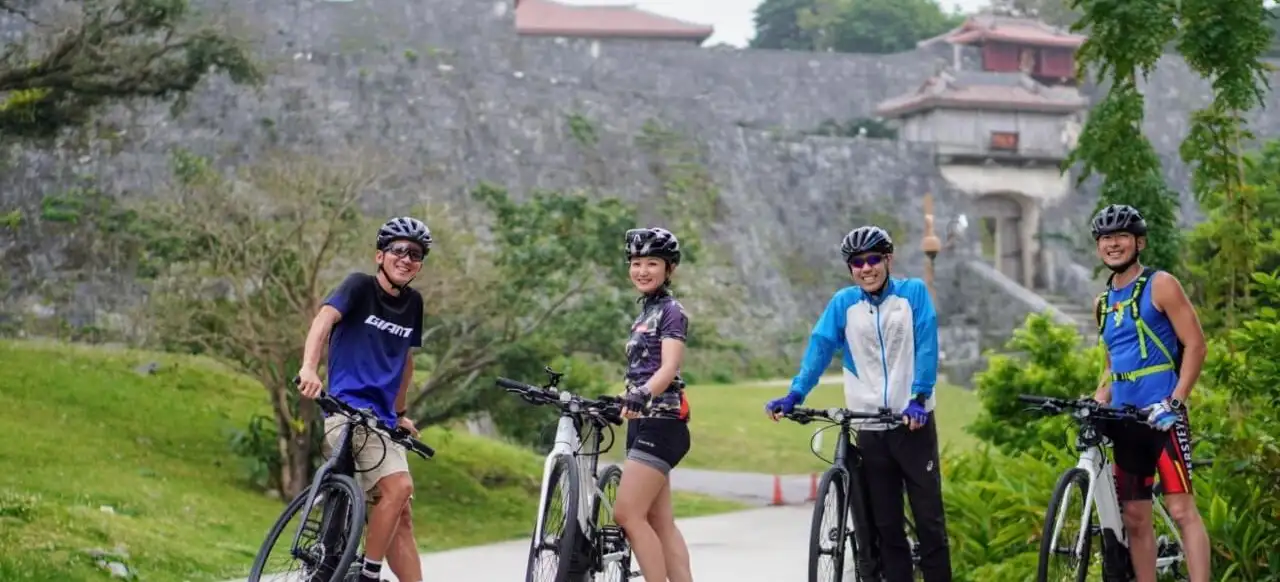
Day 2: Naha to Motobu
Your adventure begins at Naminoue Shrine, a sacred site where you can pray for the safety of your 6-day journey. Pedal through the historic city of Naha and visit the magnificent Shuri Castle, a World Cultural Heritage site showcasing the brilliant fusion of Japanese and Chinese architectural styles and the ingenuity of ancient Okinawan culture.
Next, cycle to Chatan, a vibrant area where the post-war U.S. influence is still palpable, offering a unique blend of American and Japanese atmospheres. Discover "Yachimun-no-sato," a pottery village with charming red-tiled kilns, where you can explore a stunning array of colorful ceramics and find your favorite handcrafted pieces.
Heading further north, enjoy an exhilarating ride along Okinawa's largest coastal resort area, where breathtaking ocean views await. This day promises an exciting mix of culture, history, and scenic beauty, ensuring a truly unforgettable experience.

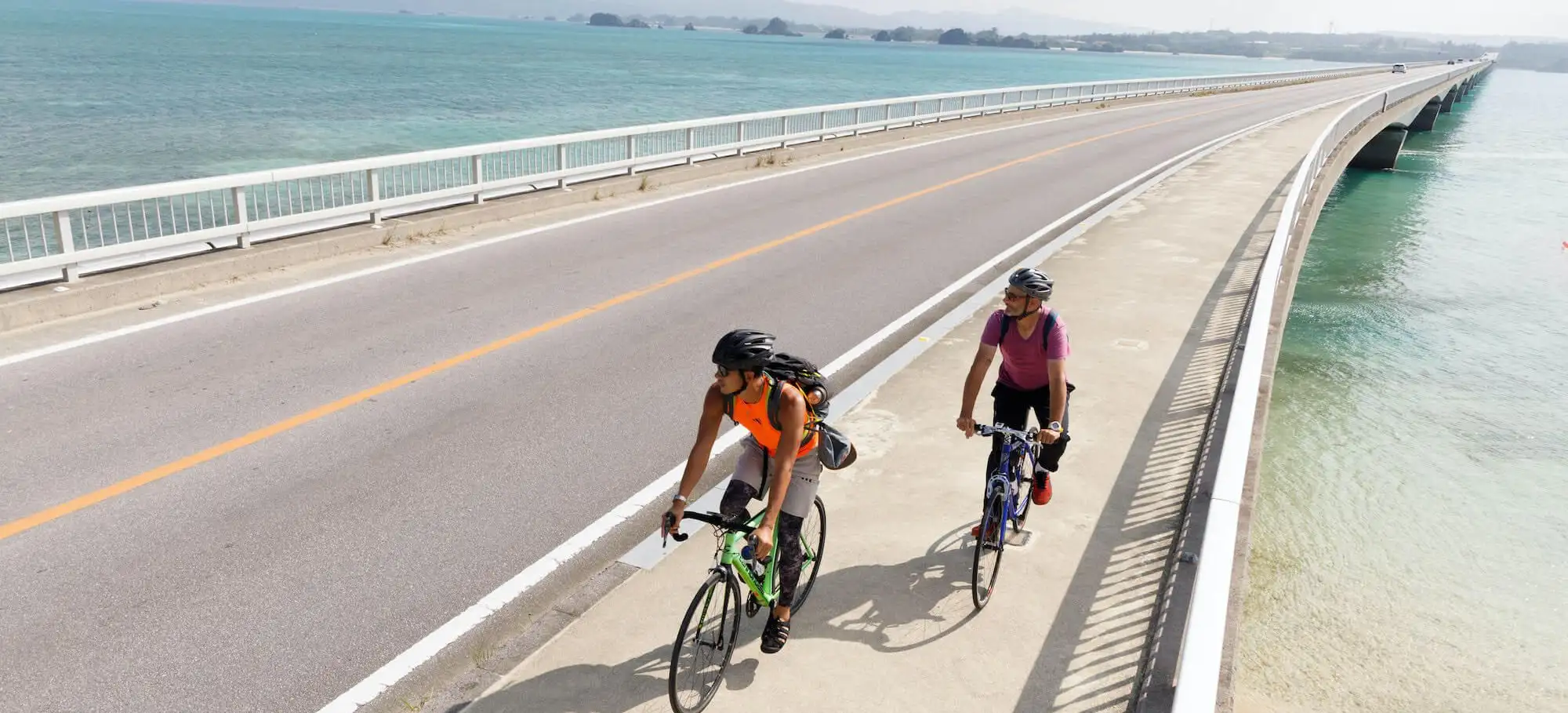
Day 3: Kunigami
Experience the enchanting beauty of Okinawa as you walk through the lush green tunnels of Fukugi trees, planted around houses as natural windbreaks. Visit picturesque villages adorned with traditional red-tiled Okinawan houses, where the soothing melodies of the sanshin, a traditional stringed instrument, fill the air.
Venture beyond the village to discover Hanejinaikai, a tranquil bay dotted with small islets and frequented by rare seasonal migratory birds. Enjoy a relaxing and breathtaking ride along the Kouri Big Bridge, spanning approximately 2 km (1.2 miles) and leading to the serene Kouri Island, offering the sensation of gliding over the ocean.
Spend your day immersed in the rich culture of traditional settlements from the Ryukyu Dynasty, and marvel at the stunning contrasts of the azure sea, vibrant blue sky, and sparkling coral reefs intertwined with a chain of idyllic islands.

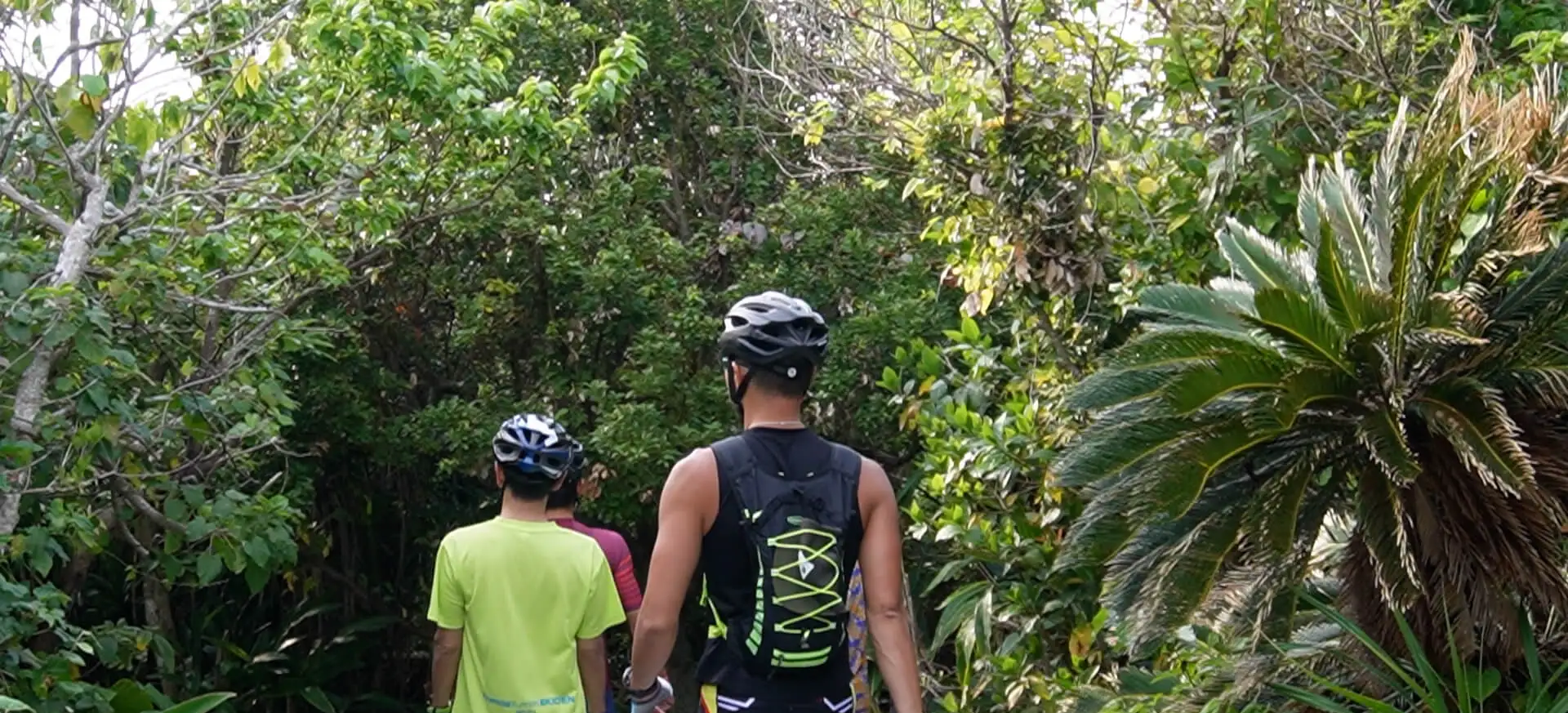
Day 4: Ada
Your journey culminates at the breathtaking World Natural Heritage Yanbaru Forest, a lush sanctuary nourished by the Kuroshio Current. Unlike other regions at the same latitude of 27 degrees north, which are deserts, this miraculous forest thrives in harmony with local communities who have lovingly restored and maintained its natural beauty.
Continuing onward, you'll reach Cape Hedo, the northernmost point of Okinawa. Here, from the sheer cliffs formed by rising coral reefs, you'll be treated to panoramic views of the turquoise waters of the Pacific Ocean and the East China Sea, with the Japanese mainland visible in the distance beyond the expansive ocean. The coastline transitions from the linear west coast to the bay-rich east coast, offering a scenic route with varied terrain through the ancient forest teeming with rare species.
At your accommodation, nestled right next to the World Heritage Area, you might even spot the elusive Yanbaru-kuina, a flightless bird found only in this region, during the tranquil early morning hours.

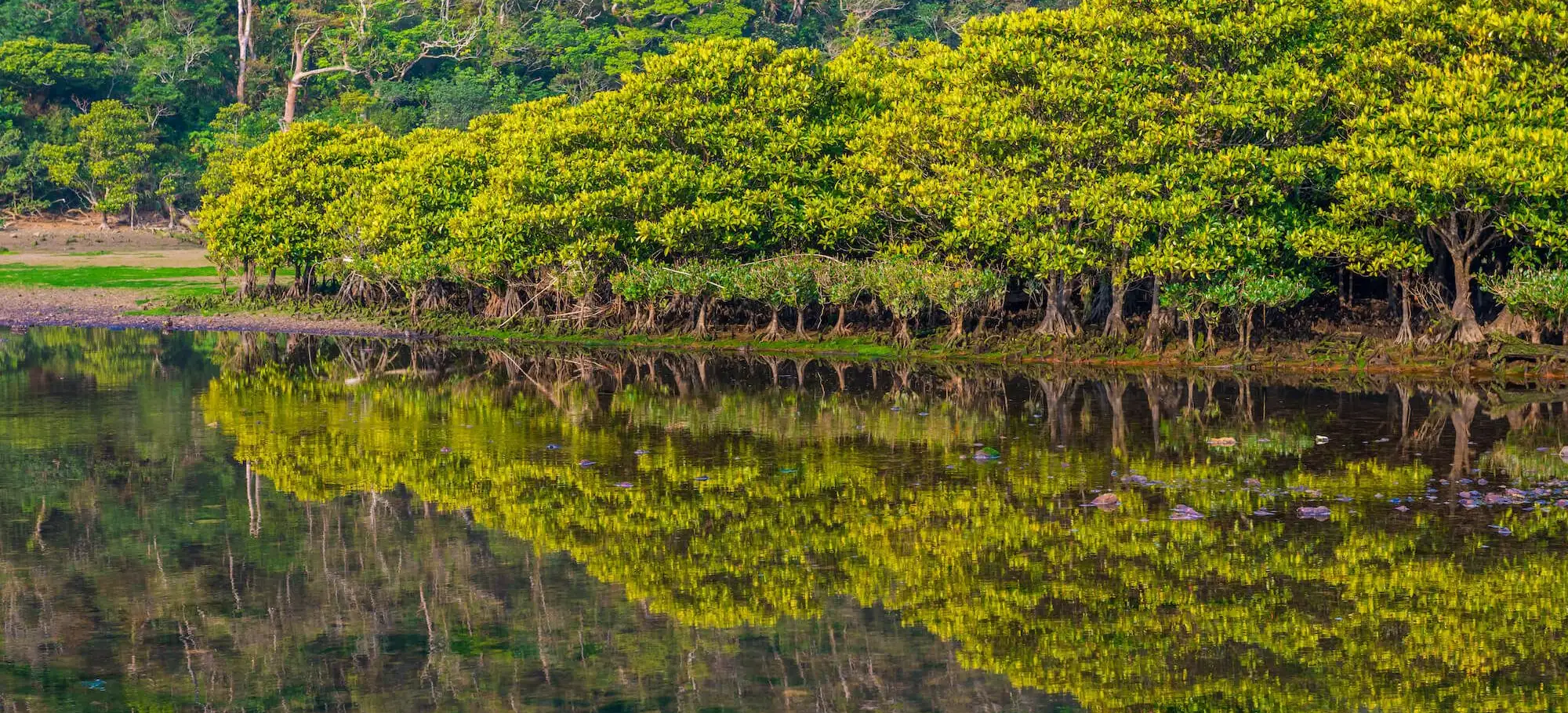
Day 5: Henoko
Continuing your bike ride through the forest, you'll emerge to a breathtaking view of the Oura River, a tributary of Yanbaru Forest, home to one of Okinawa's largest mangrove forests. Here, where subtropical forest meets the ocean, witness teeming crabs at low tide and vibrant fish at high tide, offering a glimpse into Okinawa's distinctive wildlife. Explore the Kayo Formation's layered cliffs, a geological marvel spanning millennia, revealing trace fossils that tell the island's ancient story. Unwind at your accommodation with a dip in Okinawa's unique natural spring water, sourced from deep underground ancient seawater, perfect for soothing tired muscles.

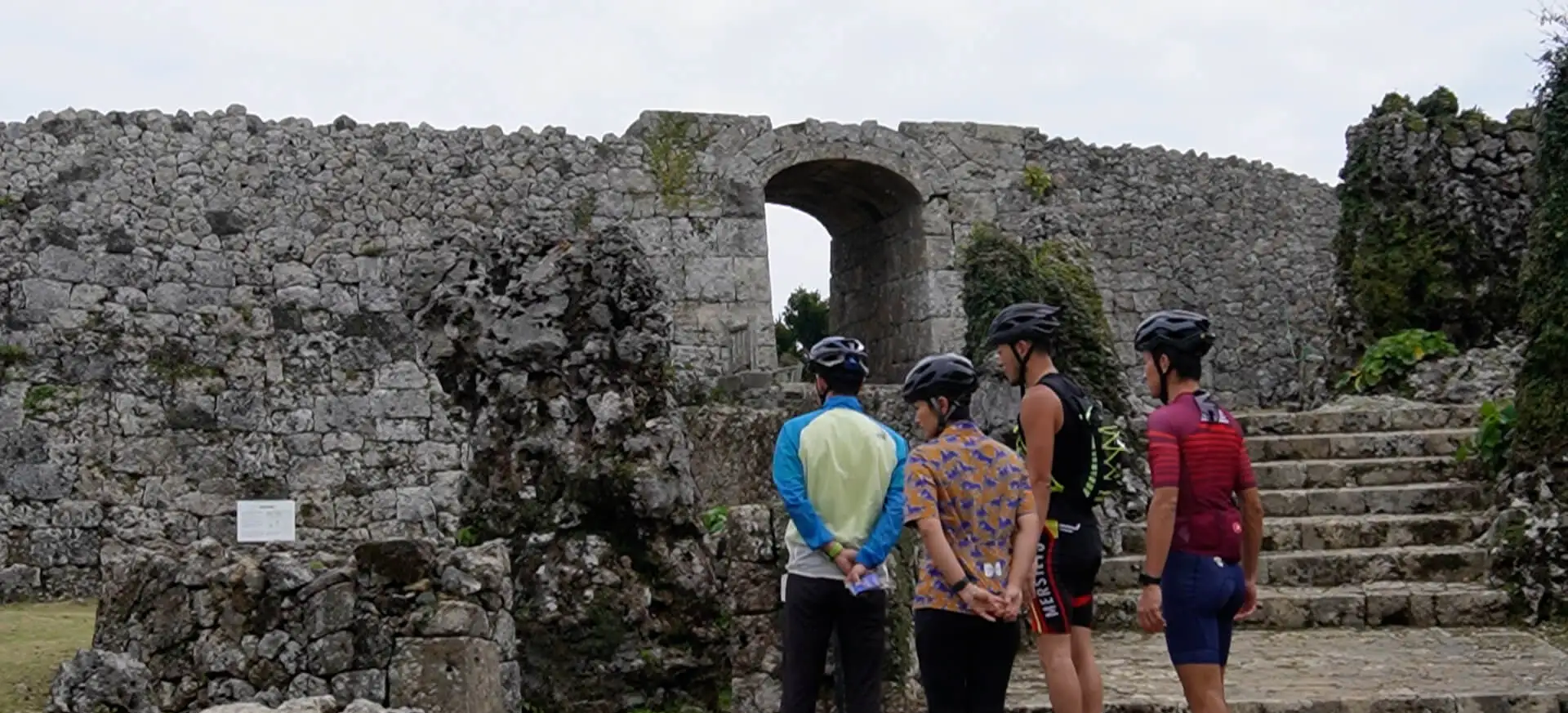
Day 6: Yonabaru
Today set out on a journey through history to Katsuren Castle, a formidable stronghold perched on a natural cliff, where defiant local lords resisted the Ryukyu Dynasty until the end. Recognized as a UNESCO World Heritage site, it blends fortress strength with spiritual significance as an "Utaki" sanctuary, revered in Okinawan nature worship. Experience the enchanting ride across the "Kaichu Road" to Hamahiga Island, legendary home of Ryukyu's founder, Amamikyo. Here, the sacred site of Shirumichu beckons, where ancestral spirits of the Ryukyu Kingdom imbue the landscape with timeless energy, attracting pilgrims year-round.

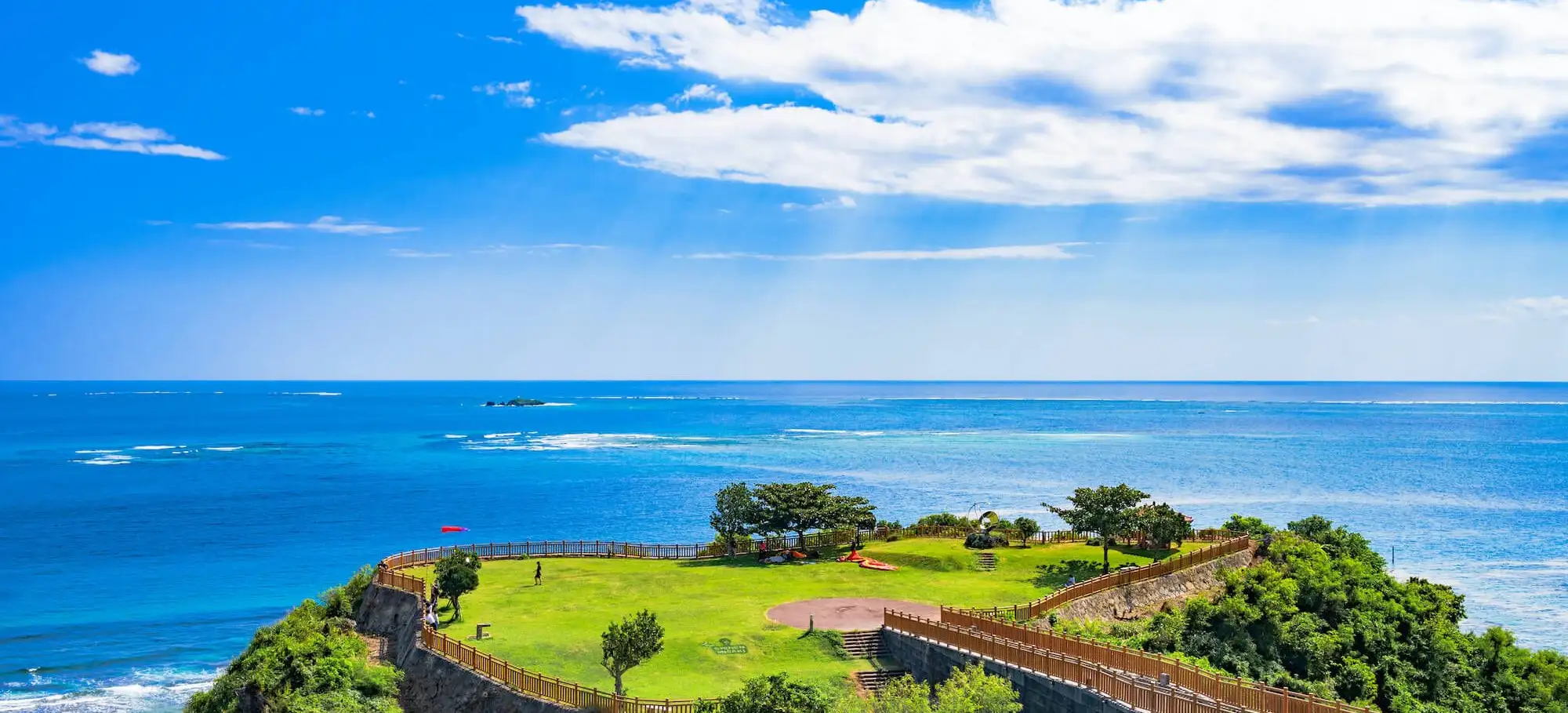
Day 7: Naha
Explore the breathtaking Chinen Cape, nestled near the UNESCO World Heritage site Sefa Utaki, offering panoramic views of Kudaka Island, revered as the sacred birthplace of Amamikyo, Okinawa's ancestral Kami who introduced the art of agriculture. Pause next at the Peace Memorial Park, honoring Okinawa's poignant history during World War II.
In Itoman, a historic seaside town steeped in maritime tradition, immerse yourself in local culture. Witness the exhilarating Itoman Hare festival, celebrating boat paddling in the lunar fifth month, and admire the traditional sabani boats once vital for fishing and transport. Finally, return to Naha, completing your unforgettable cycling tour across Okinawa's main island.

Day 8: Departure
Depart as per your onward travel plans.
Ready to plan your adventure? Download a print-ready detailed itinerary.
Map
Dates and Prices
Book with Confidence: Enjoy peace of mind — your 10% deposit is fully refundable up to 60 days before departure. See terms & conditions.
E-Bike Upgrade
From US $200
Couldn't find a trip with convenient dates?
Open your date as a join-in tour or customize further as a private one.
Essential Info
Inclusions
LODGING
All hotels as mentioned in the tour details or similar (subject to availability).
trip leader
Expert Trip Leader(s) who look after your every need and add meaning to your vacation.
bike
Immaculately maintained bike with helmet, suited to a terrain.
shuttle
A Van support follows the group of riders and carries all belongings.
meals
Meals as per itinerary. Guests are given the opportunity to dine on their own so that they discover a location independently.
refreshments
Refreshments and mineral water during activity.
entrance
Entrance fees to most of the monuments and temples.
Exclusions
Airport pickup
We recommend to book direclty from airport.
Airport drop
We recommend to book direclty from your last hotel.
Beverages
Beverages such as alcohol, tea, coffee, juice at a hotel or restaurant.
Gratuity
Gratuities for your guide team are not included in the trip price.
Weather
Okinawa offers a generally mild climate for cycling year-round, with average temperatures ranging from 15°C (59°F) in winter to 30°C (86°F) in summer.
January
Best
February
Good
March
Good
April
Good
May
Mixed
June
Mixed
July
Offseason
August
Offseason
September
Offseason
October
Good
November
Best
December
Best
Best
Good
Mixed
Offseason
What to Pack
Packing smart is essential for a safe and enjoyable cycling adventure. From essential biking gear to clothing and travel necessities, this guide ensures you're prepared for any terrain or climate.
Recommended Bicycling Clothes & Gear
- Bicycling shoes or stiff-soled sneakers.
- Padded cycling shorts.
- Short-fingered cycling gloves (personal gloves are ideal).
- Brightly colored cycling jerseys or synthetic T-shirts for visibility.
- Synthetic cycling socks.
- Sunglasses with UV protection.
- Personal helmet (recommended even though provided).
- Personal saddle (optional for added comfort).
- Rain jacket or windbreaker.
- Cycling water bottle (to reduce plastic waste).
Note: Helmets, gloves, and water bottles are personal items, so bringing your own is recommended for maximum comfort and hygiene.
Clothing
- Light, breathable fabrics like cotton or linen.
- Full-sleeved clothing for sun protection.
- Warm layers for chilly mornings and evenings (if traveling in winter).
- Comfortable footwear for non-cycling time.
- Bring a compact rain jacket in case of sudden weather changes.
- Ethnic or modest clothing for exploring towns and temples.
Other Necessities
- Toiletries: Basic hygiene essentials, including insect/mosquito repellent and sunscreen.
- Hand sanitizer and wet wipes.
- Plug socket adaptor.
- Binoculars for wildlife spotting or desert landscapes.
Pro Tips
- Pack light but plan for the varying temperatures: warm days, chilly evenings, and desert winds.
- Use brightly colored clothing for visibility on roads.
- Pack light to leave room for shopping.
Luggage
Please limit your luggage to one medium-sized suitcase and one carry-on bag. Mark your luggage with your name, address, and phone number.
Visa Information
Before venturing on your adventure, make sure you're equipped with essential travel advice, including security updates, local laws, and crucial passport and visa information. Start by visiting the official government website of your home country for accurate and reliable guidance:
- UK Residents: Stay informed by reviewing the Foreign, Commonwealth & Development Office (FCDO) Travel Advice.
- US Residents: Access vital travel tips and updates through the US Department of State Travel Advice.
- Australian Residents: Plan ahead with the latest updates on the Smart Traveller website.
- Canadian Residents: Find comprehensive travel and visa guidance on the Government of Canada's Travel Advice and Advisories.
- New Zealand Residents: Get practical travel advice on the New Zealand SafeTravel website
- Residents of Other Countries: Check with your government or local consulate for tailored travel advice and requirements.
Note: Passport and visa regulations can change at any time. Stay proactive by checking for the latest updates to ensure a smooth and stress-free journey.
Insurance
Medical insurance that covers medical costs in case of an accident during the trip is mandatory to participate in our tours.
We recommend to purchase adequate travel insurance in order to participate in our tours and protect yourself from unforeseen events. Our experience shows that guests who purchase travel insurance—including coverage for all activities on the itinerary, trip cancellation, interruption, delay, baggage damage, loss or theft, personal accident, death and repatriation costs, medical and emergency expenses (including Covid-19), and personal liability—travel with greater peace of mind.
Can I use my credit card insurance?
Yes, as long as it meets our requirements and provides adequate coverage. Ensure you have an emergency contact number and policy number available.
When should I buy travel insurance?
Purchase travel insurance as soon as you've paid in full or booked your flights.
Is proof of travel insurance required?
Yes. You must provide your insurer's name, policy number, and emergency contact via our reservation form. This is mandatory. If you cannot provide proof, you’ll need to purchase insurance before traveling with us.
Does Art of Bicycle Trips sell travel insurance?
We do not sell travel insurance directly, as we believe our customers should have the freedom to choose a policy that best suits their needs. However, we recommend Insured Nomads as a great starting point.
Frequently Asked Questions
Your guides are local cycling experts, fluent in English, with deep knowledge of the region’s history, culture, and food.
Our support vehicle is always close by to make your ride worry-free. It carries your luggage, water, snacks, and spare parts, and is there if you need a quick lift or just want to rest for a while. You’ll see it at regular intervals along the route and during meal or refreshment stops. The vehicle is also used for scheduled transfers and to ensure safety and comfort along the route.
For guided tours, we do not provide GPX files separately, as navigation is handled by your guide. On certain occasions, if you prefer more independence, we may offer app-based navigation access with the daily routes loaded. However, please understand that this may not always be possible and depends on the specific tour setup.
Airport transfers are not included unless specifically mentioned in your trip inclusions.
For airport pickup, we recommend booking directly from the airport upon arrival — most airports have reliable taxi, shuttle, or app-based options.
For airport drop, please book a transfer through your last hotel — they can easily arrange it for you.
We focus on delivering exceptional experiences during your tour. For logistical simplicity and flexibility, we do not handle pre- or post-tour hotel bookings. However, we’re happy to share a list of recommended hotels near the starting and ending points of your trip so you can plan your stay independently.
The fitness level required for each trip is indicated by the "level" of the tour, which in turn is mentioned on each tour page right next to the price and the trip duration.
Easy: The terrain is mostly flat with a few gentle climbs.
Moderate: The terrain is either mostly flat or consists of rolling hills with a few challenging climbs. There could also be a few days with longer riding distances of up to 75 kms (45 miles)
Difficult: The terrain is mostly hilly with strong elevation gains and/or has long days on the bike. Such trips are recommended for intermediate to advanced cyclists.
Please note that we usually bike around 4-5 hours per day irrespective of the level of the trip.
Yes, please communicate your dietary preferences to your trip leader and they'll ensure that the food you eat is as per your requirements.
Most of this trip is on double-lane paved tarmac roads with very less traffic.
We've designed this itinerary such that most of the cycling happens on quieter countryside roads far from busy traffic. The shuttle transfers on this tour have been strategically planned to bypass busy vehicular traffic.
While your tour price covers most common expenses, a few meals not included in the itinerary may require additional spending. As a general guideline, you can budget approximately US $25 per person per day for these extra expenditures.
Tips are not included in your tour price.
As a general rule, you may tip US$ 15-25 per person per day.
This figure is for the entire crew including the trip leader, the driver, and other support staff.
However, you are not obligated to tip, and you can always tip less or more than the above amount depending on the level of service you received on tour.
It is usually the norm to tip the tour guide, who then distributes the amount among the entire crew. However, you can also tip each individual member of the crew if you so desire.
In case you want to tip the staff at a hotel such as porters, you may pay them US $2-3 per day.
You can exchange currency at the currency exchange kiosks in Japanese airports, or you can use your credit card at ATMs at convenience stores such as 7/11 in major Japanese cities to withdraw JPY. Many Japanese commercial establishments still prefer cash, so its good to have some local currency with you when cycling in Japan.
Yes, you may wear riding shorts while riding your bike. When not cycling, it would be advisable to wear comfortable full-length pants. We recommend keeping a pair of comfortable pants handy in you support van.
When visiting temples and monuments, visitors should wear full-length, loose-fitting pants. Holy places of certain religions may also require covering your head. Your guide will inform of the dress etiquette required for visiting specific religious places.
The meeting time on Day 1 is mentioned in your travel planner shared with you. You can arrive either on the morning of Day 1 depending on the meeting time, or book a pre-tour night to arrive a day earlier.
We don't have anything planned for the last day, so you are free to depart at your discretion.
Reviews from our friends
You may also like
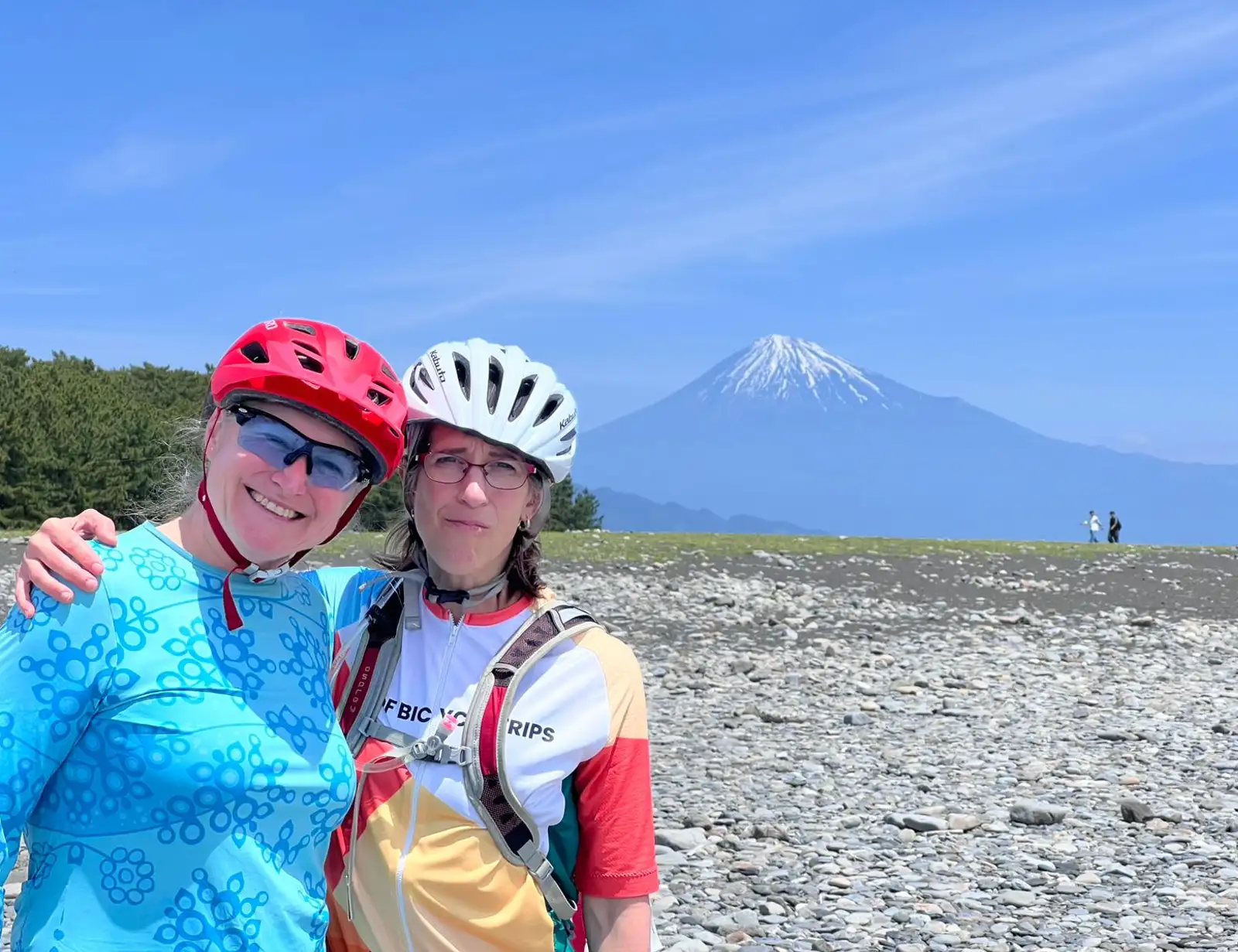
Popular
Guided Mt. Fuji to Samurai Coast Bike Tour
8 daysfrom$4,395/person
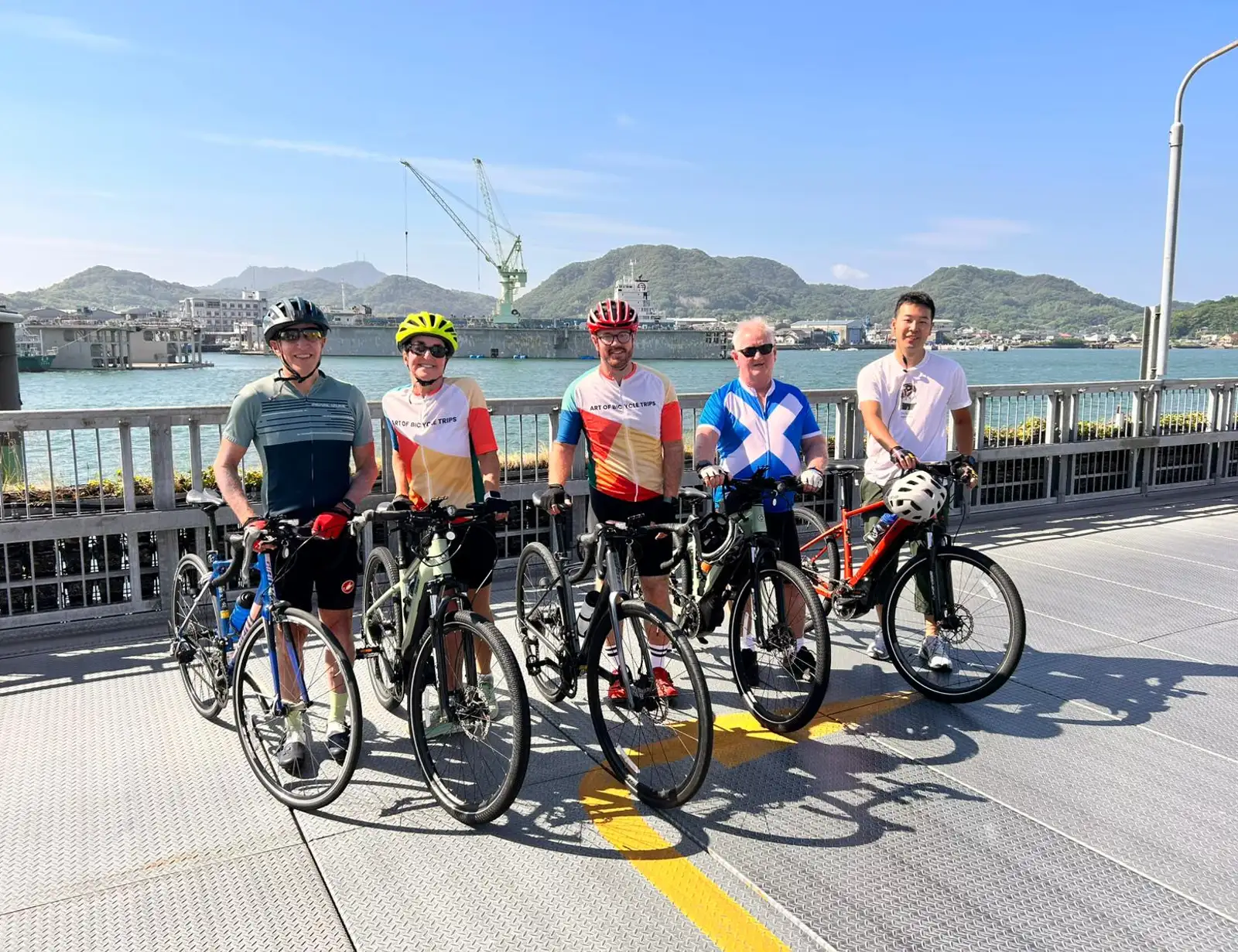
Popular
Guided Essence of Shikoku Bike Tour
8 daysfrom$4,395/person
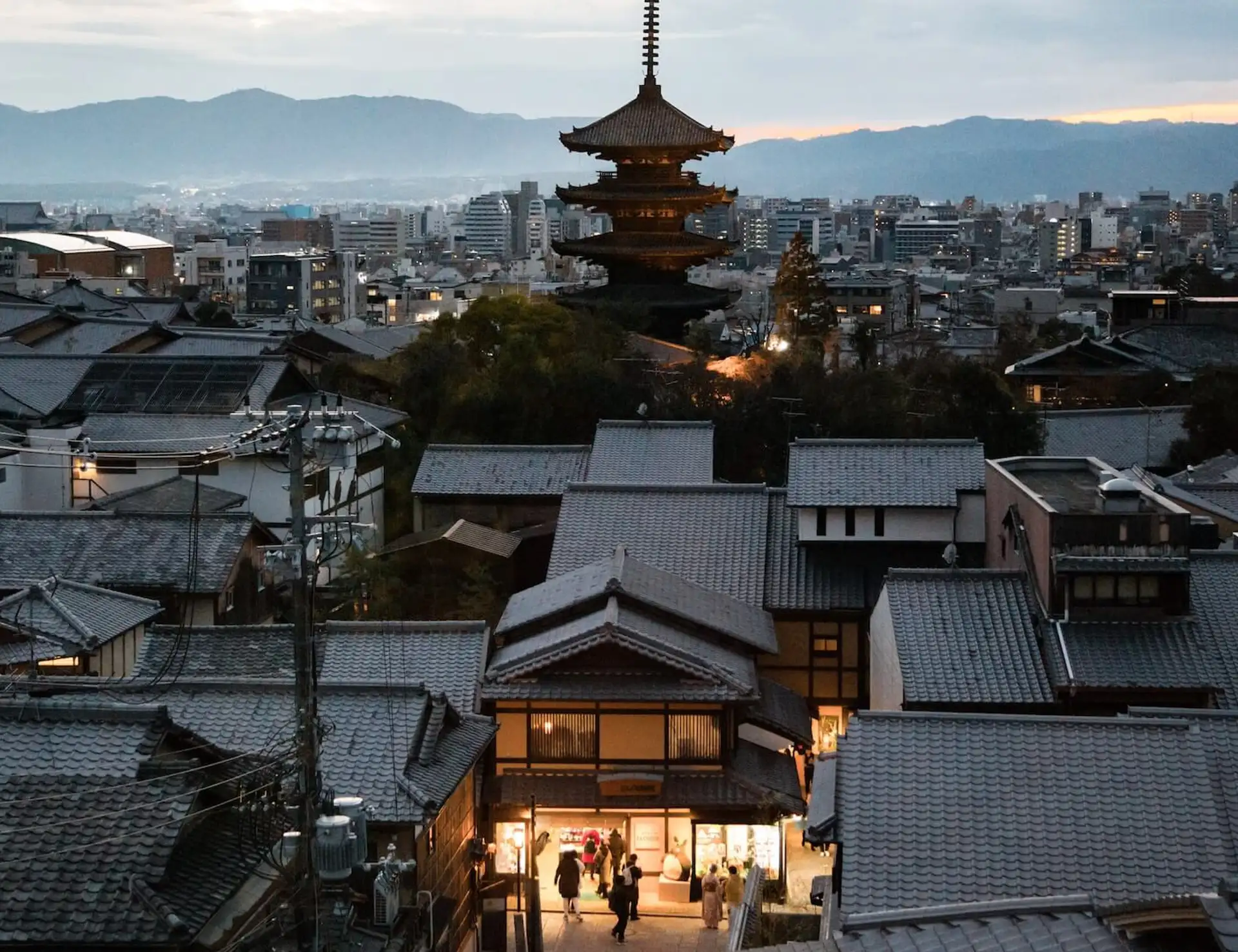
Popular
Guided Kyoto to Sea of Japan Bike Tour
8 daysfrom$4,595/person
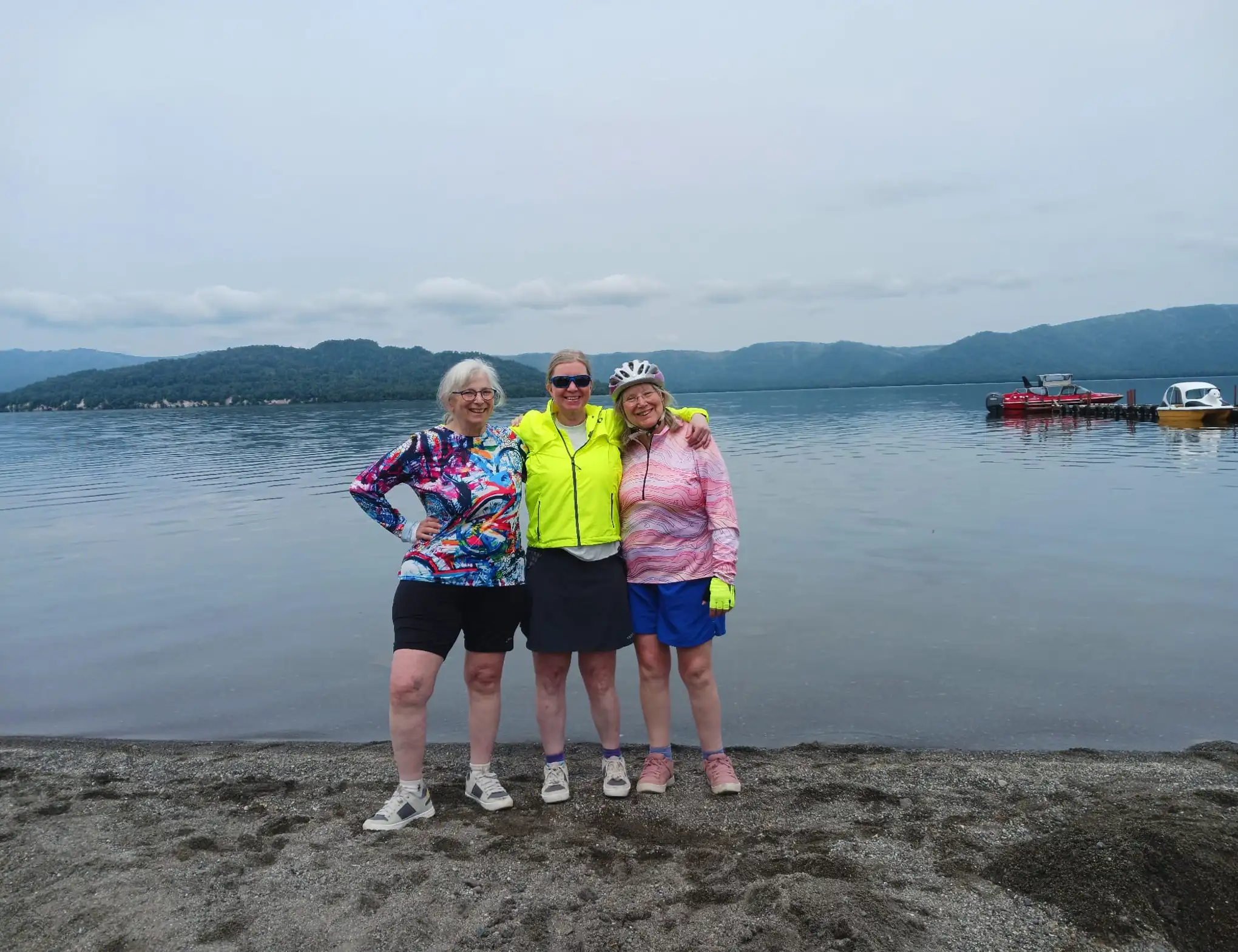
Popular
Guided Off-Beat Eastern Hokkaido Bike Tour
8 daysfrom$4,995/person
